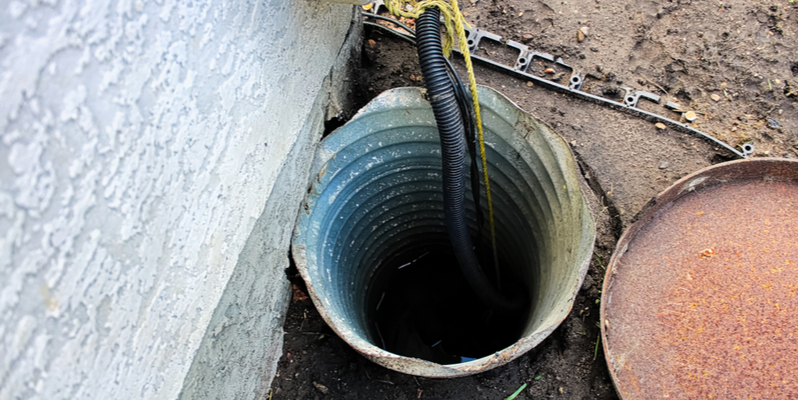The Definitive Guide to Maintaining a Sump Pump
The Definitive Guide to Maintaining a Sump Pump
Blog Article
Are you currently in search of content on How To Effectively Clean A Sump Pump?

Sump pumps are crucial components in numerous homes, especially in locations susceptible to flooding or extreme wetness. They aid prevent water damages by effectively getting rid of excess water from cellars or crawl spaces. Nonetheless, like any other home appliance, sump pumps require routine maintenance to guarantee they operate efficiently when required the most. Cleaning your sump pump is a crucial part of its maintenance, and recognizing how to do it correctly can save you from pricey repair work and potential disasters.
Introduction
Keeping a tidy sump pump is important for its appropriate functioning and durability. Overlooking this crucial task can result in blockages, malfunctions, and eventually, water damages to your residential or commercial property. For that reason, learning just how to cleanse a sump pump is essential for property owners that count on these devices to maintain their cellars completely dry and secured.
Understanding the Sump Pump
Prior to diving right into the cleaning procedure, it's necessary to have a basic understanding of just how a sump pump functions. Typically set up in a pit or basin below the cellar floor, a sump pump consists of numerous essential elements, consisting of a pump, a float button, and a discharge pipeline. When water collects in the pit, the float switch activates the pump, which after that pumps the water out via the discharge pipeline, away from the structure's structure.
Signs of a Dirty Sump Pump
Recognizing when your sump pump requires cleaning is important for preventing potential malfunctions. Some usual indicators that suggest a filthy sump pump consist of unusual sounds during procedure, reduced water flow, and noticeable particles in the pit. If you notice any one of these signs, it's essential to clean your sump pump without delay to stay clear of any kind of additional issues.
Getting ready for Cleansing
Before you start cleaning your sump pump, it's vital to take some security preventative measures. Beginning by turning off the power to the pump to avoid any electric accidents. Additionally, wear appropriate protective gear, such as gloves and goggles, to protect yourself from dirt, debris, and potential virus.
Step-by-step Guide to Cleaning a Sump Pump
Shutting Off the Power
Begin by disconnecting the power supply to the sump pump to prevent any mishaps while cleansing.
Getting Rid Of Debris and Dust
Utilize a bucket or a scoop to remove any kind of noticeable particles, dust, or sediment from the sump pit. Dispose of the debris appropriately to avoid it from obstructing the pump or the discharge pipeline.
Cleansing the Pump and Float Change
When the pit is clear of particles, thoroughly eliminate the pump from the pit. Examine the pump and the float switch for any kind of indications of damage or wear. Make use of a soft brush or fabric to cleanse the surface areas and eliminate any kind of built up grime.
Purging the System
After cleaning up the pump and float switch, purge the sump pit with clean water to eliminate any type of continuing to be dirt or debris. This will certainly assist make certain that the pump operates efficiently and effectively.
Checking for Appropriate Performance
Before reinstalling the pump, execute a fast test to guarantee that the float switch activates the pump correctly. Put some water into the sump pit and observe the pump's operation. If whatever is functioning correctly, you can reconstruct the pump and reconnect the power supply.
Maintenance Tips to Keep Your Sump Pump Clean
Along with periodic cleansing, there are a number of maintenance tips you can follow to keep your sump pump in ideal condition:
Conclusion
Cleansing your sump pump is a crucial facet of its maintenance and ensures that it runs efficiently when you require it one of the most. By following the steps laid out in this overview and incorporating routine upkeep into your routine, you can expand the life expectancy of your sump pump and protect your home from water damages.
6 STEPS ON HOW TO CLEAN A SUMP PUMP PROPERLY
UNDERSTANDING SUMP PUMPS
Your sump pump plays a crucial role in protecting your home by managing and removing excess water. It primarily functions as a “shield”, guarding your basement against the damaging effects of water accumulation. The pump is housed in a sump pit in the lowest part of your basement, and its job is to pump out any water that collects there.
During heavy rainfalls or when snow melts rapidly, water can infiltrate your basement, posing potential risks like flooding, structural damage, and harmful mold growth. Here, the sump pump springs into action, pumping out the intruding water and directing it away from your home.
SAFETY FIRST
Before cleaning, remember to prioritize safety. Disconnect the sump pump from the power source to prevent any accidental electric shocks. Also, wear sturdy gloves to protect your hands from any sharp or dirty components within the pump.
REMOVE THE SUMP PUMP
After ensuring your safety, the next step is to remove the sump pump from its pit. Doing this might require careful maneuvering as you don’t want to damage any pump components. Once removed, clean the sump pit to remove any accumulated debris or sludge.
INSPECT THE PUMP
Inspect the pump for any visible signs of wear or damage. Check the power cord, float switch, and impeller housing. If any components look worn out or damaged, consider replacing them to ensure optimal performance.
CLEAN THE PUMP
Thoroughly clean the pump with warm, soapy water. Make sure to rid it of any dirt, gravel, or other debris that might impede its performance. You can use a toothbrush to clean the small, hard-to-reach parts of the pump.
REINSTALL THE SUMP PUMP
Reinstall the pump into the sump pit Make sure it’s positioned correctly to remove the water effectively Once it’s back in place, reconnect it to the power source TEST THE PUMP
Finally, pour some water into the pit to ensure the pump works correctly. It should start automatically and begin pumping out the water; if it doesn’t, check the power source and the positioning of the pump.
Remember, while cleaning your sump pump is an essential part of home maintenance, hiring a professional plumber for a thorough inspection and cleaning at least once a year is also important. This will ensure that your pump is in optimal condition, ready to protect your home from potential water damage.
BEST PRACTICES FOR CLEANING SUMP PUMP DISCHARGE PIPES
Regular Inspection: Regularly inspect your discharge pipes, especially during heavy rainfall or snowmelt periods. Look for any signs of blockage or damage. Early detection of problems can prevent serious issues down the line. Periodic Cleaning: Over time, sediment and debris can accumulate in the discharge pipes, impeding the flow of water. Regular cleaning helps keep the pipes clear and functioning efficiently. You can use a high-pressure water jet to effectively clean the pipes. Insulation During Winter: In colder climates, discharge pipes can freeze, blocking the outflow of water. Protect your discharge pipes from freezing temperatures by insulating them with foam pipe insulation. This will ensure the sump pump can continue to discharge water even in freezing conditions. Proper Positioning: The discharge pipe should be positioned to direct water away from your home’s foundation. Improper positioning can lead to water seeping back into the basement. Ensure the pipe is long enough and angled correctly. Installation of a Check Valve: A check valve prevents water from flowing back into your sump pit after the pump has pushed it out. Installing a check valve helps maintain the efficiency of your sump pump and reduces the risk of flooding. Minimize Pipe Turns: Every curve or turn in the discharge pipe can decrease the efficiency of water flow. By minimizing turns and bends in your discharge pipe, you can increase the efficiency of your sump pump. https://www.fullspeedplumbing.com/how-to-clean-a-sump-pump-properly9999/

We are very fascinated by How to Care for Your Sump Pump and I am praying you appreciated my blog posting. Sharing is caring. You won't know, you may very well be helping someone out. Thanks for being here. Kindly visit our blog back soon.
Get A Free Estimate Report this page